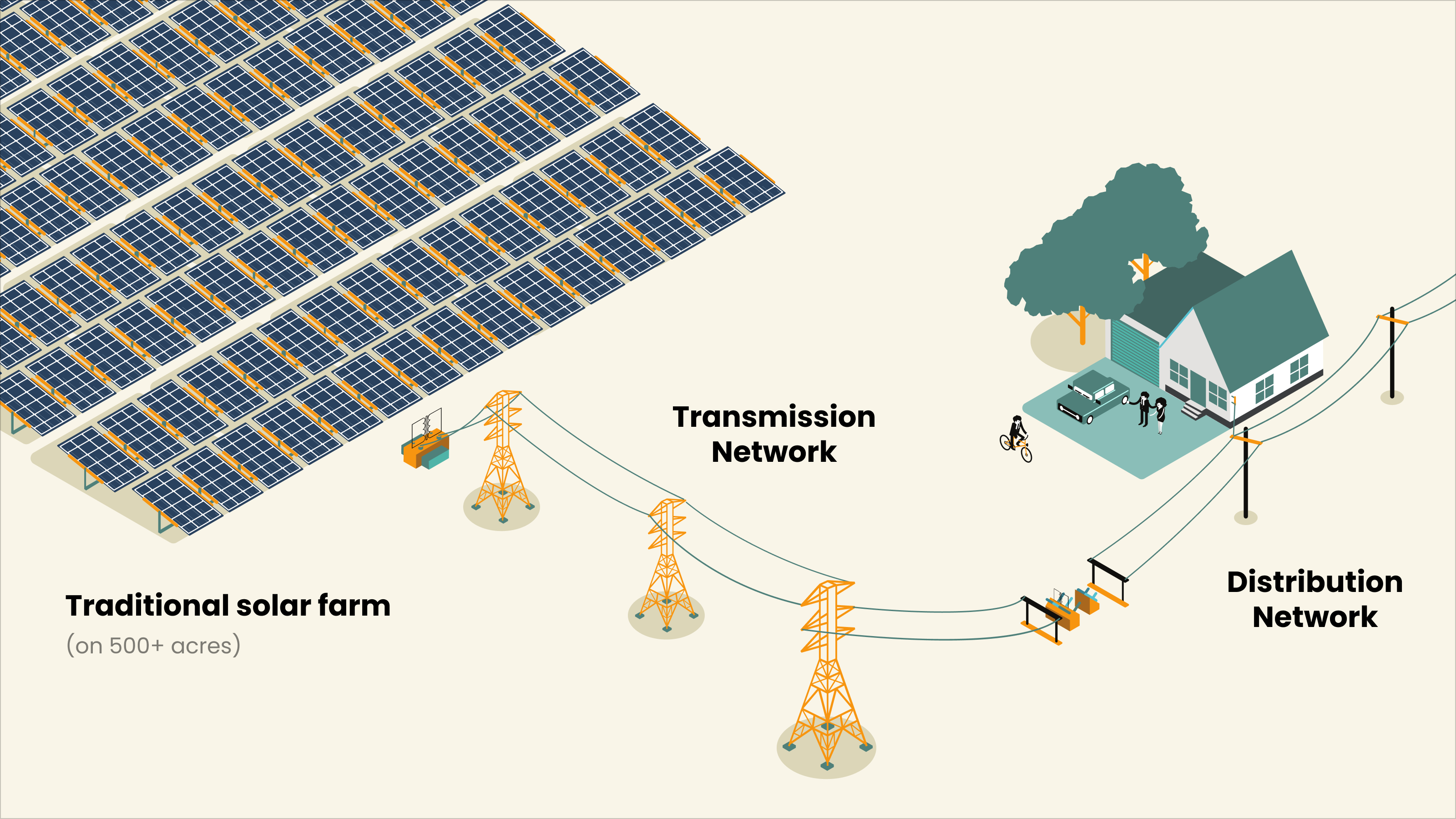Transforming How We Power Our Cities
Building solar faster and cheaper – Evergreen is bringing scalable, cost-effective solar to our urban areas sponsored by forward thinking companies looking to achieve net-zero emissions.
Jul 12, 2022
Picture a solar power farm. The idea likely brings to mind sprawling fields of reflective panels in remote, rural areas. The energy generated by these plants gets to our cities by traveling along the giant high-voltage transmission lines you see every time you drive along the highway.

from cities on the other end of the transmission network.
To avoid the miles-long journey from power plant to city, businesses and homeowners may decide to put solar panels directly on their roofs. However, rooftop systems are costly; and while far away 500-acre solar farms are cheaper per panel, they can take years to construct. At Evergreen, we think there’s a better, third option which will provide solar energy cheaply and quickly to cities.
The solution lies in the low-voltage distribution lines which the transmission lines feed into. This distribution system is made up of circuits which ultimately send the power to homes and businesses.
Evergreen is working to take advantage of these distribution lines by connecting smaller-scale power plants directly to the distribution level of transmission. In this way, cost-effective solar energy can be brought to urban areas faster than before. That’s a game changer.
Vast solar farms which span hundreds of acres cost half as much per panel compared to rooftop solar, but the energy is a long way from the city it’s going to serve, and may require upgrades to the existing transmission network.
When scaling the plant down to just 50 acres and building on the distribution network, projects can be built much faster on the existing grid, making them closer to our cities and cost-comparable to larger solar farms. A 50-acre urban solar field could provide 10 megawatts of solar power to a city, enough power to serve 2,000 homes. Our model represents the best of both worlds and delivers lots of additional solar in and near our cities.

our cities by building on the distribution side of the grid.
Evergreen is building distributed solar fields much faster and closer to our cities by building on the distribution side of the grid.
While the model for power distribution couldn’t work in dense metropolises like New York City or Los Angeles, it’s an ideal system for midsize cities scattered across the United States, particularly those found in the south and the midwest. Instead of putting solar panels directly onto every rooftop in San Antonio, for example, Evergreen could implement 400 of these smaller-scale power plants at the distribution level and power the entire city.
There’s one last huge upside to the idea: Instead of waiting for cities and utilities to fund more renewables possibly with higher rates for consumers, Evergreen funds projects with sponsorships from businesses, who can take credit for adding new clean energy to the grid to meet their own decarbonization goals. This means rates won’t go up for consumers. “We’re taking the cost burden away from the community,” says Cris Eugster, CEO of Evergreen. “By partnering with forward thinking companies to help sponsor our fields to help meet their sustainability goals.”
With more and more companies looking to go net-zero in the coming years, there should be plenty of interest from businesses to sponsor these distribution-level solar fields. Investing in our solar fields is cheaper for businesses than installing rooftop panels – and they don’t even need a roof! Overall, “It’s a pretty clever way for companies to stand up new solar and reach net-zero,” says Eugster.
Evergreen is currently eyeing multiple sites in south and central Texas as the first areas for their urban solar fields. We’re working with leading developers like Big Sun Solar to bring this concept to reality and accelerate the pace at which we bring new solar to our cities.
If you are interested in learning more about our concept and our early solar field opportunities, go to ever.green and schedule time with our staff to find ways to participate in these exciting new solar projects.






